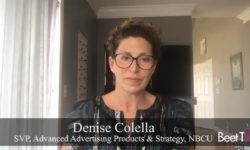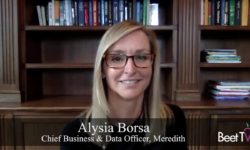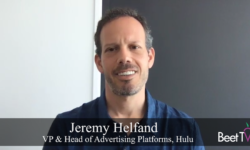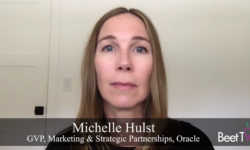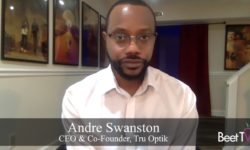REDWOOD CITY, CA — As consumption trends shift drastically, brands have found it more important than ever to use market research data to track users closely. In a BeetCam interview, Philip Smolin, chief strategy officer at Amobee, explained how this research data has made way for increased opportunity on both the buy and sell sides.
For many on the buy side, the knee-jerk reaction to the news of the pandemic was to not want to spend at all in order to avoid any association with the virus. Amobee’s market intelligence analytics have aimed to determine what kinds of content consumers are engaging with, and among other valuable insights, has led to a greater understanding among buyers to approach Covid-19 as not a singular topic, but as many different topics.
“When you dive into it, what you find is that there’s actually a lot of opportunity in there from an advertising perspective and arguably, we’re going into a period of time here that could be the single biggest opportunity for market-share shift for brands that has happened in a generation,” Smolin says.
This alters the way that both the buy side and the sell side adjust their approaches at the core. On the buy side, this means being really data driven and keeping attune to shifts in trends on a weekly basis.
“It is a really real-time, dynamic environment that we’re living in right now. Patterns change, they change by region, they’re changing daily.”
An AdExchanger article by TransUnion’s David Dowhan reinforces this message, saying that brands are increasingly turning to first-party data in order to closely monitor consumer behavior.
“Seasoned marketers are taking more stock in tools and technologies that help leverage additional, complementary data holistically to make the most of their own audience insights,” Dowhan says.
Smolin added that the sell side also needs to respond to this change in media consumption by being increasingly interactive with brands and agencies in order to understand how to best serve these new opportunities.
The lives of consumers have changed so drastically. Interests, intents, amounts of disposable income—this is just a small sample of the ways that the audience has transformed in the past couple months. For advertisers, the knee-jerk reaction to avoid COVID has been flipped around as they have opened their eyes to greater opportunity.
“There’s nuance about how life in America is changing and how your relationship as a brand to consumers should change as well,” Smolin says.
Along with this shift in media consumption comes the need to reimagine how advertisers should change their messaging and where they find their audiences. Smolin uses sporting events as an example, but is confident that this attention to first-party data will help to track where the viewers are exploring.
“It’s a crazy time right now,” Smolin says. “But if people are staying on top of the market insights and the media planning data and they are measuring for media efficiency, there are actually tremendous opportunities for them in market right now on both the buy and sell side to really move the needle.”
This video is part of a series titled Navigating Accelerated Change, presented by Transunion. For more videos, please visit this page.






